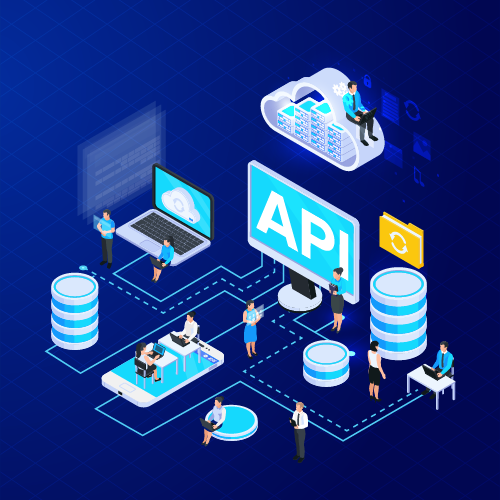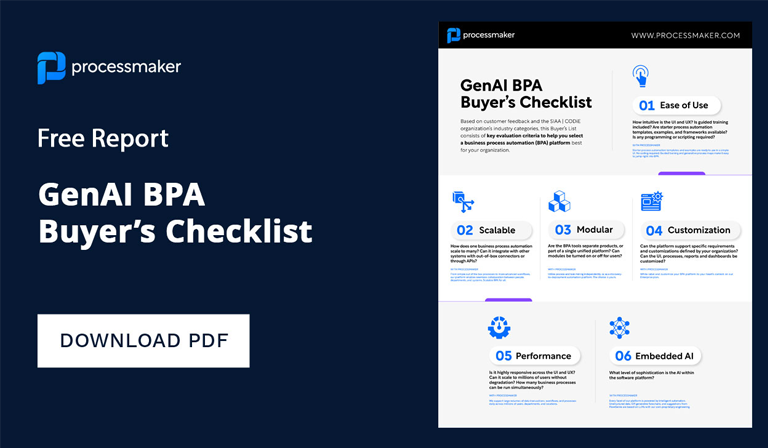Agility remains hard to secure as global markets are unpredictable. However, legacy systems are too entangled for targeted changes, and years of patchwork solutions create dependent systems where small changes can negatively impact organization-wide processes.
Rather than try to outlast the challenging times with stiff systems of the past, many organizations have tapped into the building blocks of business resilience: composability.
Composable infrastructure is just the building block foundation for other interchangeable layers to follow. Core systems like data storage and networking resources have already seen success as API-equipped cloud services.
Composable applications will leverage this foundation to integrate plug-and-play business operations — and add, change, or remove components and scale operations without wider disruptions. Let’s explore how industries will detangle their legacy systems to rapidly innovate, compete, and thrive in an uncertain future.
Setting the stage for composable applications
The core concept behind composability centers on pooling resources, such as customer data and programming code, across departments and between organizations.
To make this flexibility possible, business operations have to be:
- Accessible by living as cloud services,
- Easy to connect and integrate, and
- Quick to isolate and modify.
Rigid, monolithic systems of the past struggle where composable ones don’t. But making a more flexible enterprise starts with moving the foundation to a more accessible format.
Fortunately, organizations are already shifting key infrastructure to hybrid and private cloud models. Data storage, servers, and other components are increasingly adopted as cloud services to scale as needed. Vendors make these resources easy to integrate and adjust capacity on the fly, by design.
The next stage would be breaking applications down to their individual components.
Deconstructing the modern business application
Applications typically have their own custom-coded parts that depend on each other to work. Under traditional programming, these common components often only work with their original applications:
- Client-facing components like user interfaces,
- Core system components like databases and ERP systems, and
- Server-based processing components for dedicated application functions.
Composability proposes these components to be independent and swappable across applications. To allow these parts to “talk” to each other in different applications, APIs serve as the connective links. Each component can then easily be sourced from vendors as cloud “microservices” to build easily configurable applications.
API-based modular components cut down on the growing pain points of application development — whether tapping into internal systems or across organizations.
For instance, rising coding costs continue to challenge teams as they are forced to build custom connections. With composable applications, IT spends less time and money to integrate systems.
The biggest advantage comes from releasing business data into one hassle-free flow. No longer restricted to application silos, organizations aggregate clean data across systems for open use. This streamlines the cross-app chatter that IT struggles to enable and organize.
Decentralizing decisions around business application changes
Now that applications can be built as a collection of smaller cloud services, IT teams can pass some control onto teams in business units. Alongside low-code and no-code citizen development, decisions around scaling fall into the hands of business users who know their needs best.
For instance, a mobile app user interface overhaul may require the original developers to completely remove a traditional application from the cloud before it can be modified and redeployed.
Software composability allows teams to implement customer feedback directly and exclusively to the application’s frontend — without IT middlemen or wider application disturbances. Low-code and no-code allow even backend changes to application functions to be handled without passing through the IT department.
However, IT support remains available for coding more advanced solutions when needed. They embrace a decentralized development model to relieve their work queues for the duties only they can perform.
Ultimately, composable applications set functional teams up to understand, own, and control their components and data. Decision-making no longer rests solely on the shoulders of IT teams.
Overcoming risks of moving from legacy applications
Despite the advantages of composability, organizations still face unraveling a dependent, complex web of applications.
To execute properly, IT must patch the disconnect between technology and business needs. Composable applications are the result of a team effort between business users and technical staff. These conversations should unpack the true needs of:
- Customers and clients,
- Functional team members, and
- Key decision-makers.
Teams should start by diving deep into their goals to lay a clear transition roadmap. Among the steps for developing a composable enterprise, mapping your processes is key. This includes everything from assumed workflows to desired outcomes — and all the true process steps your teams enact each day.
As teams consider how to restructure their tech stacks, self-service should be at the forefront of these efforts.
Low-code gives more teams the opportunity to take development into their own hands. By offering a sanctioned sandbox of composable microservices, IT keeps citizen developers governable. However, they also prevent shadow IT as business users are fully equipped to define their own solutions.
Composability also invites you to dismantle your business systems in smaller, non-disruptive steps — from infrastructure to applications.
In essence, organizations must understand their workflows inside and out to pinpoint the essentials. From here, IT can source or craft the right infrastructure and app components to meet needs across departments and teams.
Protecting the future of business operations with composable applications
In practice, composable applications and infrastructure give organizations confidence their operations will remain secure, simple, and persistent.
Security governance gets easier with cleaner, compartmentalized systems. Composable software by nature keeps microservices as controlled links in the process chain. Dedicated access controls and decoupling leaves teams with more options to protect against and recover from security risks.
Business continuity (BC) also becomes more managed with more granular app construction. A single point of failure could take down a network of your existing app dependencies. But microservices can blend process orchestration and choreography to distribute the burden over multiple touchpoints.
Together, these benefits showcase key advantages of composable applications that drive their appeal. As teams endure the growing challenges of governance and continuity, competitors will shift to more resilient solutions. Pushing forward with composability is a proactive move to stay strong in an ever-evolving market.
Embrace the composable enterprise with your applications
In summary, composability breaks the walls of inflexible tech stacks to build agile businesses.
To recap, organizations are embracing composable applications to:
- Connect siloed, isolated systems,
- Scale business resources as needed,
- Establish simpler security governance, and
- Protect processes against points of failure.
Reshaping the modern enterprise opens opportunities for far better operations. As IT taps into the needs of customers, staff, and decision-makers, they can deconstruct and rebuild key systems in a malleable way. Beginning with cloud infrastructure, plug-and-play microservices build on this foundation to make quickly scalable app stacks.
Want to learn more about using low-code development to help your business embrace composability? Reach out to ProcessMaker to explore your options for business operations that can respond to the challenges in your market — today and beyond.


